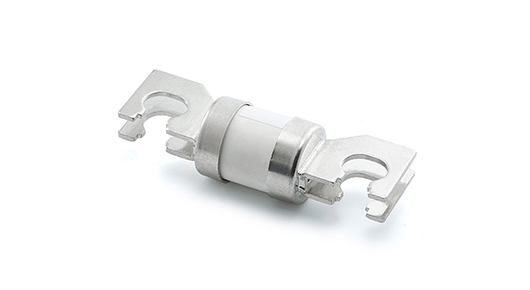What is Fuse – Symbols, Features, Types, Applications & Advantages
Fuse is one of the most common safety component for any equipment running on power. Almost all electrical/ electronic appliances and equipment utilize it some way or the other. This post will discuss what is a Fuse, why it is used, its symbols as per standards, features, various types, applications, advantages and disadvantages.
What is a Fuse
Fuse is an electrical safety device (or component) used from the early days of electrical engineering. It protects the circuit from overload. It is also called as the ‘Sacrificial Device’ in the circuit. Its working principle is based on the heating effect of the current.

Fig 1 – Different Applications Require Different Types of Fuses
Fuses are always connected in series with the circuit. It allows the current to flow through them. Whenever there is an overload in the circuit, this immoderate current melts the element in the fuse and opens the circuit by disconnecting the power supply and thus the circuit is protected from being damaged.
We must always follow a design practice in selecting fuses. A 75% factor is recommended by the suppliers, which means the circuit current should be only 75% of the fuse current rating. This compensates the environment temperature effect because at high temperature the breaking point of fuses decrease.

Fig 2 – Fuse Connected in Series with the Circuit
Symbolic Representation of Fuse
As per IEC, IEEE/ANSI standard, it is represented in following symbolic form:
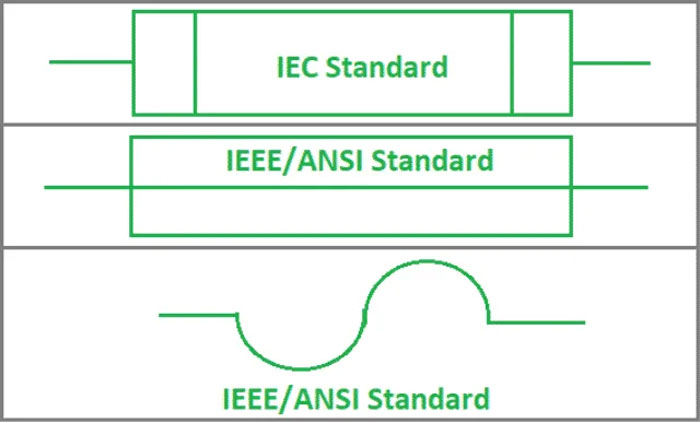
Fig 3 – Symbolic Representation of a Fuse
Features of a Fuse
The important parameters that must be considered while selecting suitable Fuses are:
• Current Rating
• I2T value
• Voltage Rating
• Operating Temperature
Current Rating
This is the current carrying capacity of a fuse measured at normal conditions and temperature. Before adopting this technique, one must make sure that circuit components are able to withstand the overload of current before the fuse act its role.
With this whenever there is a sudden increase of current only the fuses will blow out. Make sure that the circuit’s current is 75% (generally) of your fuse's current rating.
Current Circuit = 75% of Current Rating of Fuse
I2T Value of Fuse
This is also called as Melting Current. When the current increases in the circuit, the melting time of the element decreases. This is because the power dissipation and the temperature increase rapidly. In short, the product of square of the current in the circuit should be less than I2T value of the device.
I2T Circuit = I2T Device
Voltage Rating
Voltage rating for the Fuses are mainly considered for safety reasons for the circuit as well as the environment. It is because an explosion may take place and might trigger fire if the open circuit voltage is higher than that of the device when fuses open up.
Hence, fuses are also specified with maximum voltage it can be supplied with. Fuses are further categorized in to Low Voltage Fuses (LV) and High Voltage Fuses (HV).
Temperature
Temperature affects the capacity of Fuses. When the operating temperature is high, the current capacity will decrease and it melts early. Hence, the current capacity in the fuse is directly proportional to the operating temperature.
Types of Fuse
There are wide variety of fuses available for variety of applications. The main types of fuses are categorized into two broad categories based on the type of circuits they are used in. They are:
1.DC Fuses
2.AC Fuses

Fig. 4 – Types of Fuses
1. DC Fuse
AC and DC fuses can be differentiated by their size. Since DC has a constant value greater than zero volt (0v), there will be a chance of occurrence of an electric arc between the melted wires. As it is difficult to avoid, the electrodes are placed at larger distance compared to AC fuses.
2. AC Fuse
AC Fuses are further categorized into two broad categories based on the amplitude of applied voltage. They are:
• Low Voltage Fuses
• High Voltage Fuses
2.1 Low Voltage Fuse
As the name suggests, these are the fuses that are used in low voltages. Some of the Low Voltage Fuses are listed below.
2.1.1 Rewireable Fuse
Rewireable fuses (also known as Kit-Kat fuses) are of Low voltage type fuses. They are mainly used in small scale industries and house wiring. It consists of 2 parts namely:
• Fuse Base: Contains in and out terminal. It is made up of porcelain.
• Fuselink Carrier: It holds the main element and is made up of aluminium, copper or lead.

Fig. 5 – Rewireable (Kit-Kat) Fuse
The fuselink carrier can be easily removed from the base without any electric shock. When it blows out, we can easily remove the fuselink carrier and replace the wire.
2.1.2 Cartridge Fuse
Cartridge Fuses are also known as Totally Enclosed type Fuses. The fuselinks are enclosed in the glass container. By having this type of design, it helps to keep the electric arc inside the container when it blows out.

Fig. 6 – Cartridge Type Fuses
They are used in many electrical and electronics appliances. They not only protect the device but also prevents fire caused by overheating of the circuits. These type of fuses are used in both Low voltage and high voltage.
Cartridge fuses are further classified into following two types:
• 'D' Type Fuses
• Link Type Fuses
2.1.2.1 'D' Type Fuse
Diazed type fuses are made of bottle shaped ceramic body with metal end caps. These fuses are highly reliable. It consists of cartridge, base, adapter ring and a cap. The cartridge is fitted with a cap and inserted into the base using the adapter ring.
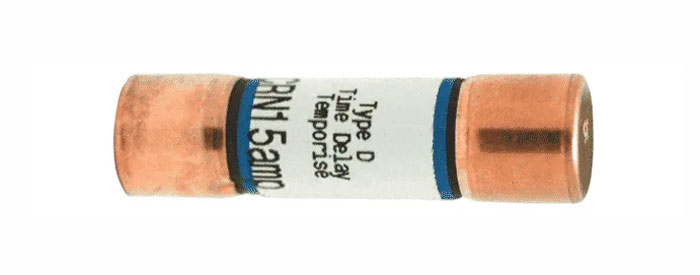
Fig. 7 – 'D' Type Fuses
2.1.2.2 Link Type Fuse
Link type fuses are also known as High Rupturing Cartridge (HRC) fuses. The current flows under normal condition through the element. The body is made up of porcelain and the chamber of main element is filled with silica sand.
If short circuit occurs then the high current flows through it for some amount of time. If the fault is cleared then it will not blow out. But if the high current continues to flow for longer duration then it blows out by melting the element.
There are 2 types of HRC fuses namely,
• Blade Type Fuses
• Bolted Type Fuses

Fig. 8 – Link Type, 'D' Type and Bolted Type Fuses
2.1.3 Switch Type Fuse
It encloses a metal switch and the fuse. These types of fuses are used in low and medium voltage levels.

2.2 High Voltage Fuse
As the name suggests, these are the fuses that are used in high voltages. Some of the High Voltage Fuses are listed below.
2.2.1 Liquid Type HRC Fuse
Liquid type HRC fuses are most commonly used in high voltage circuits. These types of fuses are mainly used for transformer protection and circuits which have more than 400A.

Fig. 10 – Liquid Type HRC Fuses
Liquid type HRC fuses are filled with carbon tetrachloride. When there is a short circuit, the current passes through the element which melts and break. The liquid used in the fuses extinguish the arc created by the short circuit.
2.2.2 Cartridge type HRC Fuse
These type of fuses are similar to low voltage fuses. It is in the shape of a ring for removing the corona effect. Two fuse elements are used in it which are placed parallel to each other. The elements are made up of tungsten metal due to high resistance property.
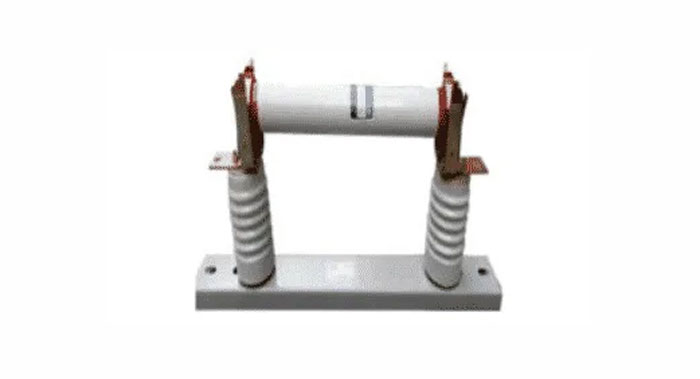
Fig. 11 – Cartridge Type HRC Fuses
2.2.3 Expulsion Type HRC Fuse
Expulsion type of fuses are used to protect transformers and feeders. It is designed for 11kv and limit is up to 250 MVA. The fuse element is placed inside the cylinder and the tops are linked to the equipment. These fuses have a cylinder designed with synthetic resin bond paper.
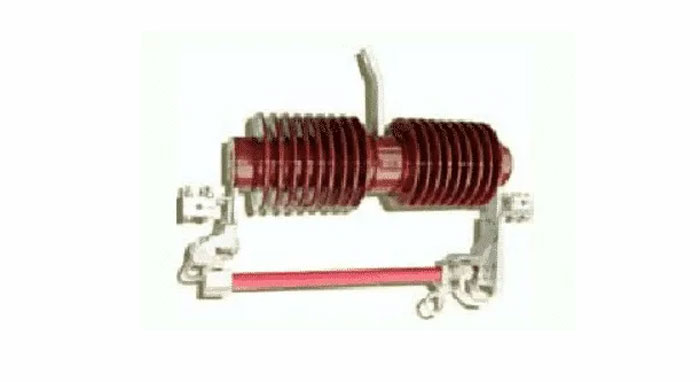
Fig. 12 – Expulsion Type HRC Fuses
Applications of a Fuse
The applications of Fuses include nearly all electrical/ electronic devices such as:
• Electrical wiring at home.
• Appliances like AC, Refrigerator, TV, Washing machine etc.
• Laptops.
• Mobile chargers.
• Automobiles (Cars, Trucks, Buses, etc).
Advantages of Fuses
The advantages of Fuses includes:
• Fuses are cheapest form of protection available.
• No maintenance is required.
• When compared to circuit breakers, fuses require less time to react when circuit breaks.
Disadvantages of Fuses
The disadvantages of Fuses includes:
• Considerable time is lost due to rewiring the fuses after operation.
• The current time characteristics of fuses cannot be related with that of protected apparatus.


